It is said that in Italy we do not want or are unable to enhance what we have, we do not take care of our historical and artistic heritage unlike other countries which invest in culture. This is certainly not the case with entrepreneurs Maddalena Salerno and Lelio Orsini, who in 2019 created pArt, the first digital platform that replicates the logic of an e-commerce to promote the restoration of artistic assets to which everyone can give a contribution, feeling in a certain sense part of a large family that has at heart the conservation of our immense artistic heritage.
Behind this ambitious and varied project there is the passion for art, dedication, commitment, simplicity and at the same time the originality of communication that must reach everyone, making even those who are not passionate fall in love with art. The works are divided on their own to bring them closer to a transversal audience. Maddalena Salerno and Lelio Orsini aim to encourage the relationship between public and private, supporting companies that decide to invest in this sector and establishing a different patronage from time to time depending on the project they have to carry out.
Among the most important restorations implemented thanks to pArt, there is a nineteenth-century painting depicting Santa Francesca Romana in the heart of Trastevere in Rome, a painting on paper by the artist Giancarlo Sangregorio, a fourteenth-century triptych and a wonderful Annunciation by Beato Angelico.
In short, art, as Lelio Orsini claims, can and must benefit everyone, because as Picasso said, “Art shakes the dust accumulated in everyday life from the soul.”
Annalina Grasso: How and when was pArt born?
Maddalena Salerno and Lelio Orsini: pArt was born in November 2019 after almost two years of start-up work. We presented the project at the headquarters of the Civita Association, in Piazza Venezia in Rome. The idea comes from a great passion for history and art. From an intuition: to make the works of art to be restored fascinating to the great public and to simplify the procedures that lead to the actual restoration of a work of art. And from a provocation: nowadays everything is desirable if communicated well and why can’t cultural heritage be too? From the desire to give our, albeit small, contribution to the protection of the artistic heritage with which we are surrounded, in which we were born and in which we live every day. It is even more so for those who live in Rome and Italy. We have dedicated ourselves at making cultural heritage closer, more accessible, more comprehensible to the general public and that is why we have decided to collect the works to be restored in a website that replicates, even if only formally, the logic of an e-commerce. An online catalog of works of art in need of restoration, so with a few clicks anyone can start a restoration project and become a patron. The use of the web and the e-commerce mechanism on the one hand help to amplify the message, on the other, they simplify its use. The works are divided into themes (history, love, friendship, philosophy …) precisely to make them more captivating and close to the public, even to non-expert or sector eyes. So why not dedicate the restoration of Romeo and Juliet’s balcony to your beloved? Or the restoration of the bust of Socrates to an elderly professor nearing retirement?
What is special about your project in your opinion?
We are the first digital platform that deliberately replicates the logic of an e-commerce to promote the restoration of artistic heritage. Not only ancient but also modern art, photography, street art. We take care of the entire supply chain that leads to the completion of a restoration, relieving the private individual or company that decides to become a cultural patron through pArt from this task. Anyone, with a few clicks, can become a cultural patron and follow the result of their online funding. The proposed restorations are suitable for all budgets, from small to medium interventions, not only in crowdfunding, up to larger projects. The patron can really see how his money is spent, he can follow the restoration of the work of art until its completion. Also we are committed to giving a fresh and modern image to cultural heritage, also creating interest in an audience of very young people, for this reason we have created an online “shop” on our social profiles, the patron can finance a restoration directly by scrolling on Instagram or Facebook. The rewards for our patrons are new, design and limited edition. We are the first to give in exchange, for example, a personalized shopper, a smartphone cover or an artist’s print to those who decide to finance the restoration of a work of art with us. In addition we like to make different fields and disciplines dialogue to stimulate our patrons to finance the restorations and entertain them every time with new ideas and proposals, for example a dinner in a starred restaurant in exchange for participation in a restoration.
How is the current condition of Italian art? What is being done and what should be done to encourage it?
Italy has an immense artistic heritage (which is known to all) and already does a great deal to preserve it, the problem is not the lack of commitment or professionalism on the part of the institutions but the huge amount of necessary interventions every year to save our works of art. It is a continuous commitment that Italy has always had to face, its priceless beauty goes hand in hand with its eternal condemnation: to be the guardian of its history. A huge open-air archaeological site that requires continuous and constant interventions. To encourage the protection of the artistic heritage it is useful to create new companies, professions and specializations focused precisely on this. It is a pity that even today most of those involved in cultural heritage must be “non-profit”, precisely because cultural heritage has always been considered sacred and untouchable. Instead, we believe a more intelligent approach is useful, in the English meaning of “smart” and therefore more skilled, acute, brilliant, but also fashionable, in step with the times. Fortunately, new interesting realities are emerging, along with ours, but there is still a lot of work to do. In our own small way we try to bring the general public closer to the world of the protection and restoration of cultural heritage and make this enormous historical and cultural baggage fascinating also for example to the very young. Today it is precisely the millennials who are more attentive and aware, our message is also addressed in part to all of them, preserving history guarantees us a better (as well as green) future. To encourage art, we believe it is essential to continuously stimulate the relationship between the public and private sectors. For this reason we turn to small, medium and large sponsored companies and we study with them from time to time specific projects.
How is possible to create a successful patronage in Italy?
A successful cultural patronage is what leaves everyone satisfied: who manages the work of art, the work of art that is restored (well) and the Patron who decides to restore it. This is where our desire to create pArt comes from, from this lack. There is no company that deals with the entire supply chain that leads to the completion of a restoration, from contact with the owner, to the management of paperwork, from drafting the restoration project to relations with the patron. In addition, we have decided to operate on two paths of patronage that are equally important to us even if distinct: on the one hand, the web, which is aimed at a vast public that finances a restoration in whole or only part of it by participating in one of our online crowdfunding . Here we are dealing with a widespread and inclusive patronage. On the other hand, we offer offline services, and on request, to companies that intend to follow the path of patronage, sponsorship or Art Bonus, supporting them in the choice of the work – even of projects outside the tender threshold – in the management of bureaucracy and in the promotion. of their company. In general, pArt enhances those who value art, through recognition (of image, moral or cultural experiences) even for small patrons and for minor interventions. It accompanies and supports companies that decide to invest in culture and in the protection of artistic heritage by enhancing their activity as patrons.
What kind of problems has the pandemic emergency caused your project?
It is certainly a difficult time for many companies and therefore funding for culture often takes a back seat. But the pandemic indiscriminately overwhelmed the entire cultural sector and this has also created a greater sense of belonging and responsibility. We have happily witnessed many projects of cooperation and collaboration in art and culture. We also noticed that the consumer, therefore the online user, spends more consciously and wisely and pays more attention to what he buys or finances. So he prefers to spend small amounts on something useful rather than making a futile and impulse expense.
Can you explain better what the task of emerging artists is and what the limited edition consists of?
Maddalena Salerno: We decided to dedicate a section of pArt to contemporary art, precisely to make it clear to those who follow us that we do not want to be out of time and dedicate ourselves only to the past but rather we like to bring cultural heritage closer to today’s disciplines and trends. Hence the idea of collaborating with the world of contemporary art and design and creating a dialogue between ancient art and the expressive modes of the present by commissioning a multiple or a limited edition design object to a contemporary artist, in response and in relation to one of the masterpieces of the past to be restored. The artists, selected by the curator Ilaria Gianni, are able to construct a dialogue with the masterpieces of the past in a surprising way, revealing their hidden traits, and highlighting new interpretations of the artistic heritage that belongs to us. Thus the patron receives, included in the cost of the restoration, a unique or limited edition work of art, as a souvenir of his intervention. A concrete example: a lithograph by the contemporary artist Gianni Politi will go in exchange for the thirty patrons who will decide to restore a work of art by Antonio Canova.
Your motto is: “take part, save art”. Does everyone understand the importance and value of art, beyond the generous contributions? Is art really democratic?
Lelio Orsini: Certainly beautiful things are really difficult and require thought, care and time and when Cicero said that some deeply understand the reason for art and others only the delight it gives, in my opinion he intended to argue that art still benefits all without distinction. All the arts that concern the intellectual culture of man have a certain bond between them and being the fruit of the manifestation of thought and creativity, they belong to the human race as a whole. For this reason, Art is certainly one of the most democratic expressions of man and pArt, giving everyone the opportunity to participate in the apology of beauty, through a widespread cultural patronage, makes it even more so.
What part of your work are you most proud of?
Surely the restorations that we are able to complete, concretely see the result of our work and admire the work of art restored to its original beauty. But then undoubtedly the aspect of concrete immediacy, giving the patron the opportunity to participate in a restoration with a few clicks. pArt does everything the Patron no longer has to do.
Could you give us some important examples of works recovered or in the process of being restored?
We have completed some important restorations including a nineteenth-century painting depicting Santa Francesca Romana, patroness of the homonymous assistance association for the elderly in the heart of Trastevere in Rome. A specific non-profit campaign activated in favor of the Spallanzani Hospital in Rome in the first period of the Covid-19 emergency was completed: twelve Roman artists donated a work of art to fundraise. At the moment the “Taste Food, Save Art” campaign is active, at lunch in the cities of Rome, Florence and Milan to restore a work of art, which has so far collected 40% of the set budget and which will end at the end of June 2021. There will be three works to be restored: a painting on paper by the artist Giancarlo Sangregorio, a fourteenth-century triptych and a wonderful Annunciation by Beato Angelico.
Personal question: who are your essential artists?
Impossible to list them all, and in any case pArt is super partes and tends to protect all the artistic heritage, past, present and future!
Examples of works, churches, unknown sites but to be recovered to be absolutely known?
In this period, you can take the opportunity to learn more about nearby destinations that we have often postponed to visit more distant ones. Remaining in Lazio it is certainly worth discovering the wonderful Crypt of the Cathedral of Anagni, thanks to the collaboration with the Museum of the Cathedral we were able to include in our catalog the works to be restored that are kept there.
Next goals?
Following the pandemic, we are concentrating and consolidating on our splendid Italian peninsula, in the future we would like to export the pArt format to other countries as well, because as art knows no borders, our initiative can also become international and provide a useful, concrete and immediate to enhance other cultural heritages that have often been influenced or have influenced what we enjoy daily by immersing ourselves in our culture.
Info:
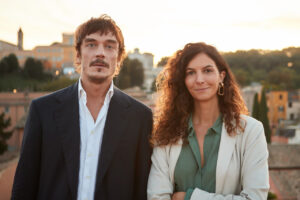 The co-founders of pArt Lelio Orsini and Maddalena Salerno, photo: Vittorio Bonaffini
The co-founders of pArt Lelio Orsini and Maddalena Salerno, photo: Vittorio Bonaffini
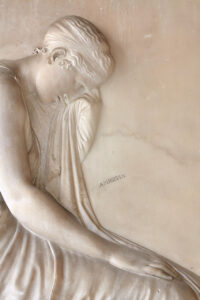 Bas-relief detail by Antonio Canova, In memory of Giovanni Volpato, 1804-1807, atrium of the Basilica of the Santi XII Apostoli, Rome, photo: Simon d’Exéa
Bas-relief detail by Antonio Canova, In memory of Giovanni Volpato, 1804-1807, atrium of the Basilica of the Santi XII Apostoli, Rome, photo: Simon d’Exéa
 Beato Angelico, Annunciazione, 1430-1440, Museo della Basilica di Santa Maria delle Grazie, San Giovanni Valdarno (AR), photo courtesy Museo della Basilica
Beato Angelico, Annunciazione, 1430-1440, Museo della Basilica di Santa Maria delle Grazie, San Giovanni Valdarno (AR), photo courtesy Museo della Basilica
 Francesco Borromini, Micromosaic cross made by the mosaicist Giovan Battista Calandra, 1625, Museum of Santa Maria in Cappella, Rome, photo: Simon d’Exéa
Francesco Borromini, Micromosaic cross made by the mosaicist Giovan Battista Calandra, 1625, Museum of Santa Maria in Cappella, Rome, photo: Simon d’Exéa
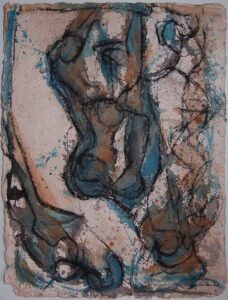 Drawing on paper by Giancarlo Sangregorio, photo courtesy Fondazione Giancarlo Sangregorio
Drawing on paper by Giancarlo Sangregorio, photo courtesy Fondazione Giancarlo Sangregorio
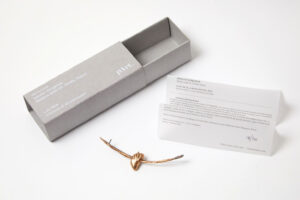 Multiple by the artist Lulù Nuti, bronze brooch, photo: Simon d’Exéa
Multiple by the artist Lulù Nuti, bronze brooch, photo: Simon d’Exéa
 The co-founders Maddalena Salerno and Lelio Orsini with the artist Gianni Politi at the Lithography F.lli Bulla in Rome, photo: Simon d’Exéa
The co-founders Maddalena Salerno and Lelio Orsini with the artist Gianni Politi at the Lithography F.lli Bulla in Rome, photo: Simon d’Exéa
 PArt platform from smartphone, photo: Vittorio Bonaffini
PArt platform from smartphone, photo: Vittorio Bonaffini
Journalist, blogger and social media editor from Campania. i graduated in literature and philology and I gained a master in art and organization of cultural events. I love cinema, art, music, literature, especially Russian, French and Italian. I read a lot, both narrative and non-fiction. I share Picasso’s thoughts on art: “Art helps us to recognize the truth”.


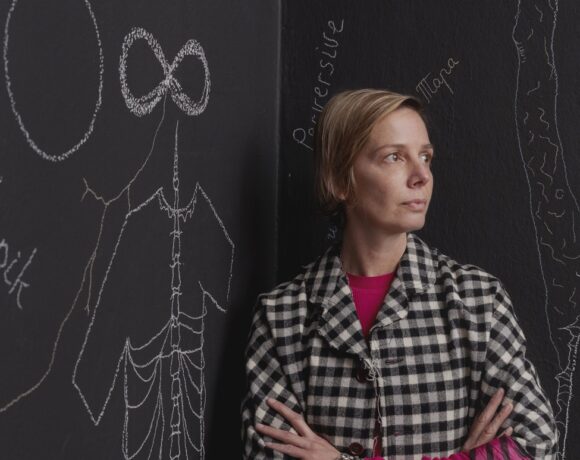
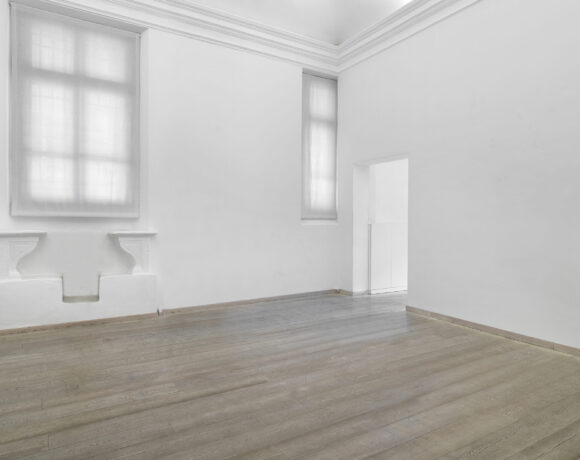
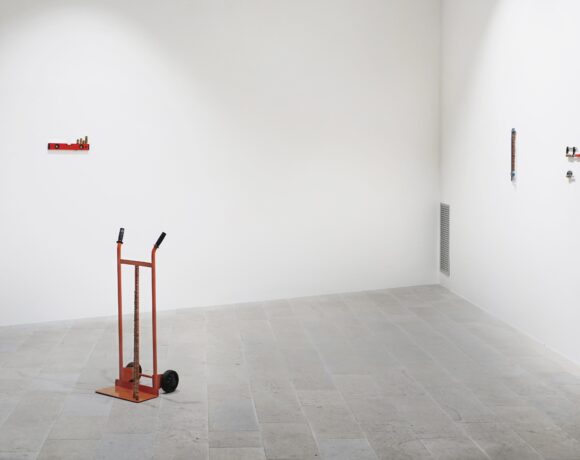

NO COMMENT